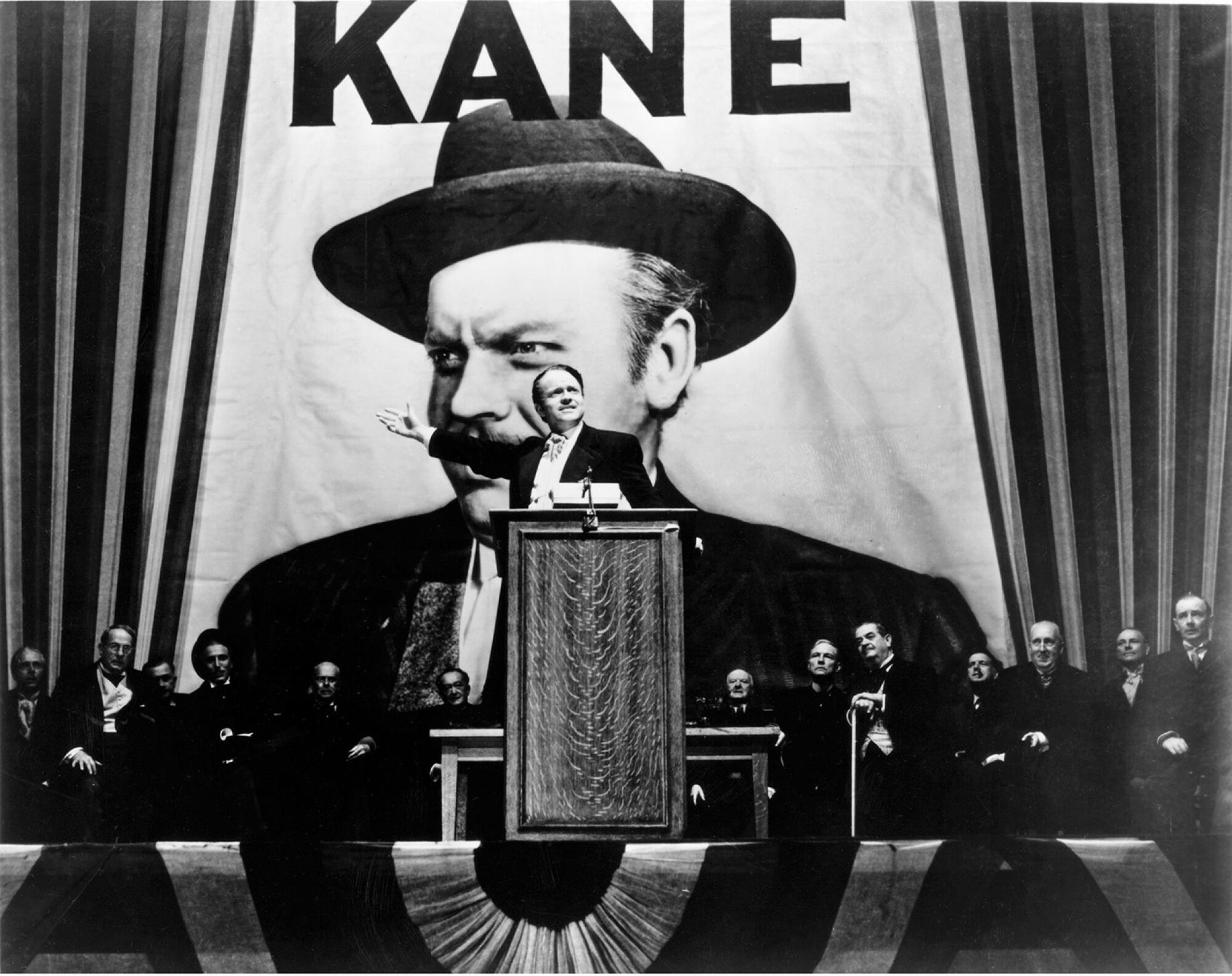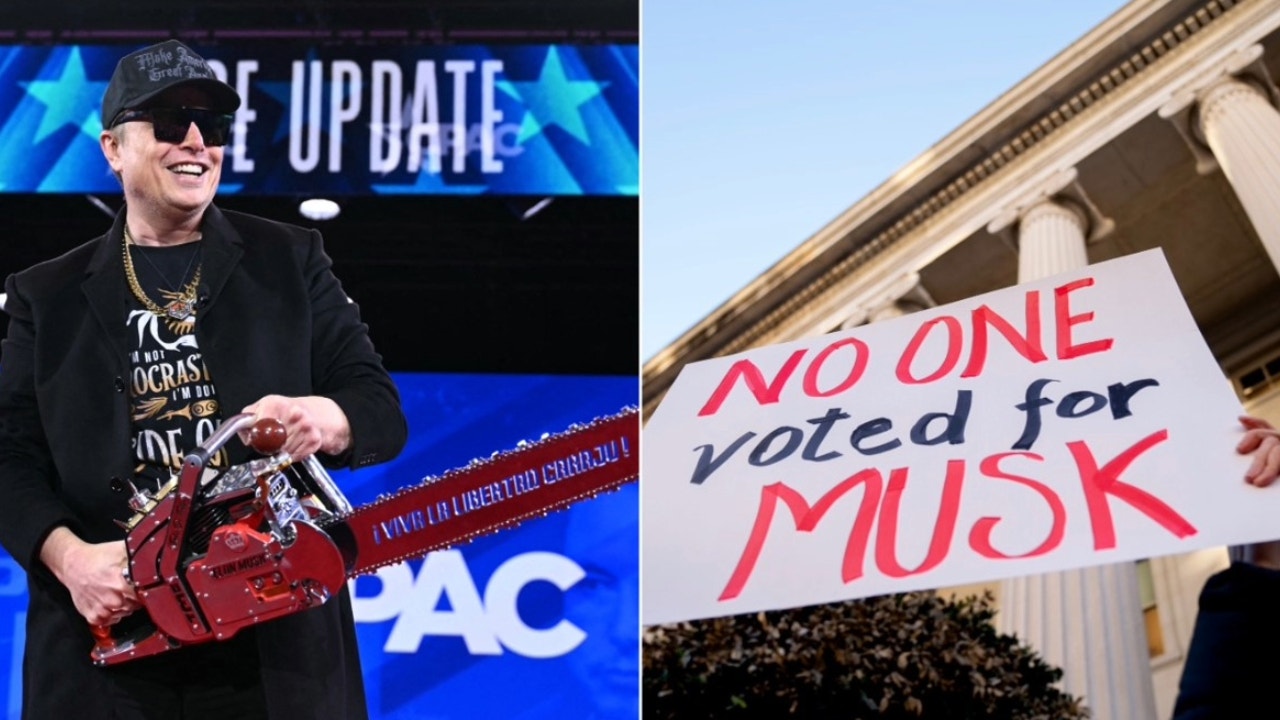Business
A world away from the Palisades and Altadena, landlords try to sell fire victims on living downtown

With thousands of houses and apartments lost to wildfires in an already tight housing market, landlords in downtown Los Angeles are trying to woo displaced fire victims to a more urban setting far from the burn zones.
A social media campaign has been launched by members of the Historic Core Business Improvement District to get people searching for housing to consider moving into one of L.A.’s oldest neighborhoods, where century-old office and retail buildings on blocks south of City Hall have been converted to apartments.
Downtown is outside the familiar haunts of most displaced people, district Executive Director Blair Besten acknowledged, but she said she hopes the availability and price of apartments there might tempt them to consider it.
“The Westside and the Pasadena area might be saturated with people wanting to move in proximity to where they lived before,” Besten said. “That might not be possible.”
Quite a few displaced people were already apartment renters. Real estate data provider CoStar said 480 multifamily buildings with 9,500 rental units were potentially damaged or destroyed within the fire zones.
The affected properties are overwhelmingly older, small-scale apartment buildings owned by mom-and-pop landlords. Nearly 75% of the buildings contain fewer than 15 units, CoStar said, and have an average age of 71 years. Many of them lack common modern amenities such as central air conditioning, fitness centers or pools.
The cost to rebuild such modest housing “poses a nearly insurmountable challenge,” CoStar said. “New apartment construction in Los Angeles has skewed toward luxury, with units completed last year averaging $3,300 in rent, a stark contrast to the rates associated with the rental properties in the fire zones” where the average asking rate was $2,640 per month.
Modern seismic building codes and inflation-driven construction costs further compound the difficulty of redevelopment, making it financially prohibitive for many property owners, CoStar said.
The Historic Core program has about 500 units available at an average of $2,046 per month, Besten said. To increase the appeal to fire refugees, landlords are offering leases as short as three months and will arrange with furniture rental businesses to furnish units for new tenants.
“We’ve tried to very quickly furnish some homes, including kitchen essentials and bath essentials,” said Laurie Miskuski of landlord ICO Group. “There are many people who have lost everything, and the last thing they need to be worrying about is a toaster or a coffee maker.”
Among ICO Group’s properties is the Mercantile Lofts, which opened as a department store in 1907 and was turned into housing more than a decade ago. ICO also owns the Broadway Lofts, a 1907 Renaissance Revival-style building also dating to 1907.
The fires that turned people out of their homes have been “an incredibly traumatic event,” Miskuski said. “We’re trying to extend a hand and say, ‘Hey, we may not be the neighborhood you’re used to, but we are a vibrant neighborhood with many things to offer where more people are welcome.’”
The bulk of the units included in the business improvement district’s outreach program so far are in five historic buildings that have had problems of their own as a new owner took on deferred maintenance and ejected tenants who weren’t paying rent.
“COVID did a lot of damage to downtown in a lot of ways,” said Mark Sanders, co-founder of landlord Fifteen Group. “Habitually, people were not paying rent, and the eviction moratorium didn’t help.
“It’s taken us a long time to cycle through a lot of those units, which is why we have this vacancy” well above market standards, Sanders said.
He hopes that the ample vacancy in his buildings that include the Marley Lofts and the Thurman Lofts might even be a selling point to people displaced by the fire who might want to live close to family members, friends or members of their church or synagogue.
“Now they have a chance to kind of stay together by renting in the same building,” he said.
The business improvement district is looking to add other landlords to the appeal program, which Besten hopes will also improve the public image of the Historic Core.
The district’s advertising campaign on Instagram focuses on the availability of short-term leases and the chance to live in architecturally historic buildings in a neighborhood that has shops, restaurants, offices and entertainment in walking distance.
Once the commercial heart of the city for business, shopping and entertainment, the district fell on hard times in the late 20th century as businesses moved a few blocks west and department stores followed their customers to the suburbs. It revived after 2000 with the arrival of apartments, trendy stores, bars and upscale restaurants, but the tenor of some streets changed again during the pandemic as homelessness became more prevalent.
Reaching out to people displaced by fire offers district stakeholders an opportunity to reach out to “people who have been curious about what it’s like to live somewhere and not have to get in their car for an entire weekend” she said. They may ask, “what does that look like and would I be willing to give it a shot?”

Business
Officials Are Fired at Traffic Safety Agency Investigating Musk’s Company

The federal agency responsible for traffic safety, which has been investigating whether self-driving technology in Tesla vehicles played a role in the death of a pedestrian, will fire a “modest” number of employees, an agency spokesman said late Friday.
The agency did not say whether any of the fired employees were involved in investigations of Tesla, whose chief executive, Elon Musk, is leading the Department of Government Efficiency established by President Trump.
The efficiency department has been forcing layoffs at numerous government agencies as part of an effort to reshape the federal bureaucracy. Mr. Musk has retained control of Tesla while spending much of his time in Washington.
The National Highway Traffic Safety Administration has three active investigations of Tesla, according to agency documents, including one examining whether the company’s autonomous driving software is prone to failure when visibility is poor.
The layoffs at the traffic safety agency, which has less than 1,000 employees, were reported earlier by The Washington Post. Even after the layoffs, the agency continues to employ more people than at the beginning of the Biden administration, the agency said in a statement.
“The last administration grew NHTSA by a whopping 30 percent,” the agency said in a statement.
“We have retained positions critical to the mission of saving lives, preventing injuries, and reducing economic costs due to road traffic crashes,” the agency said. “We will continue to enforce the law on all manufacturers of motor vehicles and equipment.”
Tesla did not respond to a request for comment.
One of the investigations into Tesla is based on four accidents involving technology that the carmaker calls supervised full self-driving, which can steer, brake and navigate Tesla cars in some situations. In one of the crashes, a Tesla struck and killed a pedestrian, according to agency documents. In another of the accidents, a person was injured.
Tesla’s self-driving technology relies on cameras to survey a car’s surroundings, in contrast with competitors like Waymo, a unit of the same company as Google, that also uses lasers and radar to recognize objects.
The traffic safety agency has been looking into whether Tesla’s technology failed when visibility was poor because of glare from the sun, fog or dust.
Mr. Musk has often argued that Tesla self-driving technology is safer than human drivers.
The technology is also crucial to Tesla’s future and share price. As Tesla sales have flagged, falling 1 percent last year even as the global market for electric vehicles rose 25 percent, Mr. Musk has shifted the company’s focus to autonomous driving technology and plans for a self-driving taxi.
The technology will help make Tesla the most valuable company in the world by far, Mr. Musk told investors last month.
Business
Beyond 'Emilia Pérez': Inside 7 of the nastiest Oscar campaigns in history

By the time “Emilia Pérez” had garnered 13 Oscar nominations, including for best picture, Netflix’s Spanish-language musical about a transgender drug lord had already been mired in controversy. Critics skewered the film’s portrayal of trans issues and Mexican culture.
Then Karla Sofía Gascón’s old social media posts resurfaced in which the first out trans performer to receive a lead actress nod maligned Muslims, George Floyd and diversity and seemed to body-shame the singer Adele.
Gascón apologized, deactivated her X account and then went on the defensive, sometimes tearfully, in an interview with CNN en Español, on her Instagram account and in a letter to the Hollywood Reporter in which she denounced “this campaign of hate.”
After the social media storm erupted, during a talk on podcast “The Town,” Netflix chief content officer Bela Bajaria called the controversy “a bummer” that distracted from the film and its accolades. Gascón has largely been sidelined from the movie’s awards drive.
Yes, it’s Oscar season, where the road to the red carpet is often littered with unforced errors, smear campaigns, opposition research and sometimes dirty tricks in efforts to undermine if not outright torpedo the front-runners’ chances.
The Academy Awards are not just an evening of self-congratulation. In addition to prestige, an Oscar is a huge publicity generator that can translate into box office grosses, home video sales and streaming viewership.
While in years past such campaigns usually were fueled by awards consultants and frequently aimed at a single movie or actor, this season has seen controversies served upon multiple contenders.
It’s not just the professional consultants and studio marketers involved in these so-called whisper campaigns. Now small armies of amateur Internet sleuths and movie fans have joined the fray, turning gripes and teapot tempests into social media scandals.
“The big difference in the last 10 years is social media fanning the flames,” said Jason E. Squire, host of “The Movie Business Podcast” and professor emeritus at USC‘s School of Cinematic Arts. “The real question is whether it impacts Oscar voters.”
In addition to the travails of Gascón, best picture nominee “The Brutalist” has been slammed for admittedly using an AI speech tool to aid stars Adrien Brody and Felicity Jones’s Hungarian language skills. Fernanda Torres, the lead actress nominee for “I’m Still Here,” came under fire for appearing in blackface on a Brazilian television show in 2008. Torres apologized.
Then there’s “Anora,” another best picture nominee, which was lambasted for not hiring an intimacy coordinator on set. At a London screening, Sean Baker, the film’s director, said that he had offered one to the lead actors.
With this year’s Academy Awards just weeks away, we take a look at notable controversies of the past, some of which perhaps deserve their own statuettes for spite and nastiness: putting the tin in Tinseltown.
Gwyneth Paltrow and Joseph Fiennes in “Shakespeare in Love.”
(Miramax Films)
“Shakespeare in Love”
Oscar year: 1999
Backstory: Steven Spielberg’s World War II epic “Saving Private Ryan” was considered the favorite, but Miramax co-founder Harvey Weinstein, known for turning awards campaigns into a blood sport, had other plans.
Controversy: “Shakespeare in Love’s” best picture win is widely seen as the capstone to one of the most controversial award campaigns in Oscar history.
Mark Gill, then Miramax‘s L.A. president, told the Hollywood Reporter, “We used the playbook for ‘The English Patient’ — turbocharged, on steroids. It was just absolutely murderous the whole way through.”
Miramax staffers called voters to make sure they had received a VHS copy of “Shakespeare in Love.” Weinstein enlisted First Lady Hillary Clinton to host the film’s world premiere in New York, unleashed a blizzard of ads, hosted parties with the film’s stars and set up screenings and private dinners with Oscar voters.
Weinstein also was accused of badmouthing the Spielberg film, a DreamWorks release.
Terry Press, DreamWorks’ marketing chief at the time, later said that she received calls from reporters telling her that Miramax publicists were “trying to get us to write stories saying that the only thing amazing about ‘Ryan’ is the first 20 minutes, and then after that it’s just a regular genre movie.”
And the Oscar goes to: “Shakespeare in Love” won seven Academy Awards including best picture and lead actress (Gwyneth Paltrow). “Saving Private Ryan” won five, including director (Spielberg).

Russell Crowe played mathematical genius John Nash in “A Beautiful Mind.”
(Universal Studios)
“A Beautiful Mind”
Oscar year: 2002
Backstory: The life of mathematician John Nash, a Nobel laureate who triumphed over schizophrenia, was chronicled in this acclaimed Ron Howard-directed biopic, earning eight Oscar nominations, including best picture.
Controversy: A narrative caught fire with critics who began charging that the more negative parts of Nash’s life were omitted from the film. Accusations that Nash was an antisemite, adulterer and homophobe began to appear in reviews, gossip sites and news articles, prompting him to appear on “60 Minutes” to refute the claims.
Angered by the reports, Sylvia Nasar, the author of the book on which the movie was based, wrote an op-ed for The Times, rebuking journalists and saying they had “distorted” material from her book and “invented ‘facts.’”
And the Oscar goes to: “A Beautiful Mind” won four Oscars including best picture, supporting actress (Jennifer Connelly) and director (Howard).

Whoopi Goldberg in “The Color Purple.”
(Michael Ochs Archives / Getty Images)
“The Color Purple”
Oscar year: 1986
Backstory: Spielberg’s adaptation of Alice Walker’s Pulitzer Prize-winning novel earned 11 nominations, including best picture, director and adapted screenplay, and was Oprah Winfrey’s film debut, garnering her a supporting actress nomination.
Controversy: When the film was released in 1985, it immediately sparked a backlash, coming under fire for its depiction of rape and stereotypical representations of Black men, a portrayal that Spike Lee decried as “one-dimensional animals.” It also faced criticism for having been directed by a white man. During a special screening in Los Angeles, the Coalition Against Black Exploitation staged a protest.
And the Oscar goes to: “Out of Africa” took home the best picture trophy. “The Color Purple” was shut out, vying with 1977’s “The Turning Point,” which also earned 11 nods, for the most nominated film to take home zero awards.

Jessica Chastain starred in “Zero Dark Thirty.”
(Jonathan Olley / Sony Pictures Releasing)
“Zero Dark Thirty”
Oscar year: 2013
Backstory: Kathryn Bigelow directed this thriller about the decades-long manhunt for 9/11 mastermind Osama bin Laden, and the U.S. military raid on his Pakistani compound where he was killed. The film received five Oscar nominations including best picture and original screenplay.
Controversy: When it was released, the film earned plenty of critical huzzahs, with The Times calling it “cinematic storytelling at its most effective.”
But it also drew opprobrium, with detractors taking aim at the movie’s depiction of torture and questioning its veracity. The film became a flash point for partisan bickering when critics of the Obama administration claimed that the film’s planned October release was timed to boost his reelection campaign — it was later moved to December.
There also were claims by some conservative activists that the CIA provided classified information to Bigelow and her team as they researched the film, charges that were denied by the filmmakers. A Senate inquiry into the matter was later dropped, Reuters reported.
And the Oscar goes to: “Zero Dark Thirty” took home the award for sound editing. Ben Affleck’s “Argo” won the top prize.

Viggo Mortensen and Mahershala Ali in “Green Book.”
(Patti Perret / Universal Pictures)
“Green Book”
Oscar year: 2019
Backstory: The film chronicles the real-life friendship between a Black classical pianist, Donald Shirley, and Tony “Lip” Vallelonga, his Italian American driver, as they travel across the segregated South during Shirley’s concert tour in the 1960s. Directed by Peter Farrelly, it starred Mahershala Ali as Shirley and Viggo Mortensen as Vallelonga and earned five Oscar nominations including best picture.
Controversy: A swirl of charges surrounded the film, with many involving racial politics. Shirley’s family castigated the filmmakers for excluding them, saying the movie’s portrayal of Shirley as estranged from his family and the Black community was “hurtful.” They also called into question the depiction of his friendship with Vallelonga. Dr. Maurice Shirley, Donald’s brother, described the movie as a “symphony of lies.”
And the Oscar goes to: “Green Book” took best picture as well as statuettes for original screenplay and supporting actor (Ali).

Joan Crawford as Blanche Hudson, left, and Bette Davis as Baby Jane Hudson in ‘Whatever Happened to Baby Jane?”
(Silver Screen Collection / Getty Images)
“Whatever Happened to Baby Jane?”
Oscar year: 1963
Backstory: The bitter rivalry between screen legends Bette Davis and Joan Crawford helped propel this film about an aging onetime child star who torments her sister, a paraplegic former actor.
Controversy: The actresses’ discord played out offscreen as Crawford actively campaigned against Davis, who earned a nomination for lead actress — her 10th and final nod.
Crawford, who was snubbed, ended up onstage and accepted on behalf of Anne Bancroft, who won for “The Miracle Worker,” beating Davis. Bancroft was appearing on Broadway and was unable to attend the ceremony.
And the Oscar goes to: “Whatever Happened to Baby Jane” won one Oscar, for costume design.

Orson Welles as Charles Foster Kane in “Citizen Kane.”
(Warner Bros.)
“Citizen Kane”
Oscar year: 1942
Backstory: Often cited as the greatest film ever made, “Citizen Kane” tells the story of Charles Foster Kane (played by Orson Welles, who co-wrote and directed), a wealthy newspaper publisher whose death becomes a global sensation. It earned nine Oscar nominations including best picture and director.
Controversy: The movie was considered a thinly veiled swipe at real-life newspaper tycoon William Randolph Hearst, who did not take kindly to the celluloid portrait. He attempted to blacklist it through negative press in his Hearst newspaper chain and, along with his defenders, pressured theaters not to show it.
And the Oscar goes to: “Citizen Kane” won a single Oscar, for original screenplay. “How Green Was My Valley” won best picture.
Business
Stock Market Sees Biggest Declines of Trump’s Presidency So Far

Stocks slumped on Friday, with the S&P 500 wiping out almost all of its gains since President Trump took office last month, after a widely watched measure of how consumers feel about the economy showed mounting fears over stubborn inflation.
The S&P 500 fell 1.7 percent, adding to a modest dip on Thursday and notching the worst week of Mr. Trump’s second term, which began five weeks ago. The index is now just 0.3 percent higher since Inauguration Day. Other stock indexes also fell, with the tech-heavy Nasdaq Composite dropping over 2 percent on Friday.
Fueling the decline was an unexpected drop in the University of Michigan’s consumer sentiment index, which slumped to its lowest level in more than a year in February. The index showed consumers more worried over the path ahead for the economy than economists had expected.
The survey showed consumers expecting that prices for goods and services would rise at an annual rate of 3.5 percent over the next five to 10 years, the most since 1995. Consumers are wary of spending on big-ticket items, and more than half of the survey respondents expect the unemployment rate to rise over the next year.
For investors, inflation expectations have taken on renewed importance as the Federal Reserve has signaled that it is unlikely to lower interest rates again unless inflation falls closer to its 2 percent target. The Fed’s preferred measure of inflation is currently just below 3 percent.
The Trump administration’s policy priorities, especially those targeting tariffs on U.S. trading partners and the deportation of immigrants, have raised concerns about reigniting inflation, leading to higher prices at the supermarket and higher interest rates on mortgages and other debt.
High interest rates tend to weigh on the stock market, while the prospect of faster inflation has raised fears about the ability for consumers to keep powering the domestic economy, as they have done since the coronavirus pandemic hit roughly five years ago. That could push the economy toward “stagflation,” the unpleasant double-whammy of slowing economic growth and rising prices.
This week, the S&P 500 inched up to a record high. But instead of being the catalyst for a further stock rally, the market’s heights have been a persistent cause of consternation among investors. Many are unsure if companies can produce the results to justify such lofty valuations and prevent their stock prices sliding.
Investors had already been jittery this week because of worrying signs from corporate bellwethers like Walmart, which said in its latest earnings report that it expected slower growth ahead amid the uncertainty around U.S. tariffs.
Some investors also noted Friday’s large expiration of derivatives contracts tied to the stock market may have exacerbated the sell-off.
-

 Education1 week ago
Education1 week agoPhiladelphia Closes Schools for Eagles’ Super Bowl Parade
-

 Culture1 week ago
Culture1 week agoChampions League: Man City have Madrid mountain to climb, are PSG better minus Mbappe?
-

 Education1 week ago
Education1 week agoHow Schools Are Responding to Trump’s D.E.I. Orders
-

 Education1 week ago
Education1 week agoCovid Learning Losses
-

 Politics1 week ago
Politics1 week agoTrump supporting California sheriff to launch GOP run for governor in race to succeed Newsom: sources
-

 News1 week ago
News1 week agoDonald Trump opens the door to Vladimir Putin’s grandest ambitions
-

 News1 week ago
News1 week agoImmigration poll shows growing support for restrictions, but deep divisions remain
-

 World1 week ago
World1 week agoEU Commission promises 'firm, immediate' reaction to new US tariffs















